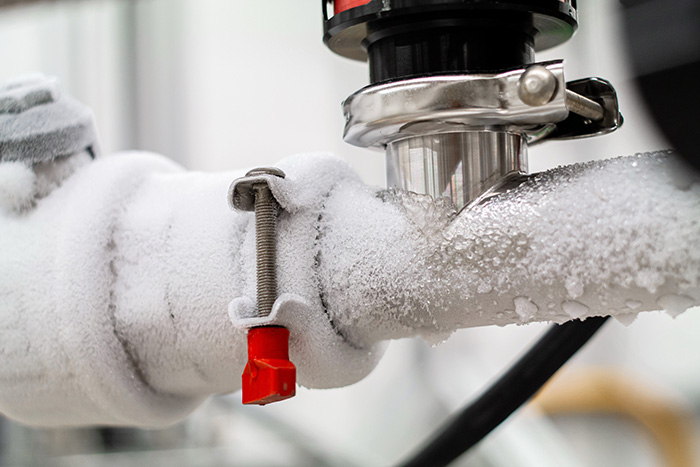How to Protect Pipes from Freezing Issues: Crucial Advice
How to Protect Pipes from Freezing Issues: Crucial Advice
Blog Article
Presented here on the next paragraphs you can locate some great advice related to How to Prevent Your Pipes From Freezing.

Winter can ruin your plumbing, specifically by freezing pipelines. Here's how to avoid it from taking place and what to do if it does.
Intro
As temperature levels drop, the danger of icy pipelines boosts, potentially causing pricey fixings and water damages. Recognizing exactly how to prevent icy pipes is essential for property owners in chilly climates.
Comprehending Frozen Pipelines
What causes pipelines to ice up?
Pipelines ice up when subjected to temperature levels listed below 32 ° F (0 ° C) for extended periods. As water inside the pipes ices up, it broadens, putting pressure on the pipe wall surfaces and potentially causing them to break.
Risks and damages
Icy pipes can bring about water interruptions, building damage, and costly repairs. Burst pipes can flood homes and trigger extensive structural damage.
Indications of Frozen Piping
Identifying frozen pipes early can avoid them from bursting.
Exactly how to determine icy pipelines
Try to find lowered water flow from taps, uncommon smells or noises from pipes, and visible frost on subjected pipes.
Prevention Tips
Shielding at risk pipelines
Wrap pipelines in insulation sleeves or make use of warm tape to safeguard them from freezing temperatures. Concentrate on pipes in unheated or outside areas of the home.
Home heating techniques
Keep indoor spaces properly heated, specifically areas with pipes. Open up cupboard doors to enable cozy air to distribute around pipelines under sinks.
Protecting Outside Pipes
Garden pipes and outdoor taps
Disconnect and drain garden pipes before winter season. Set up frost-proof faucets or cover exterior taps with insulated caps.
What to Do If Your Pipes Freeze
Immediate activities to take
If you believe icy pipelines, keep taps open to relieve stress as the ice melts. Utilize a hairdryer or towels taken in warm water to thaw pipes gradually.
Long-Term Solutions
Architectural changes
Take into consideration rerouting pipes away from outside wall surfaces or unheated locations. Include extra insulation to attic rooms, basements, and crawl spaces.
Upgrading insulation
Invest in premium insulation for pipelines, attic rooms, and walls. Correct insulation aids preserve constant temperatures and reduces the threat of frozen pipes.
Final thought
Stopping frozen pipelines requires positive procedures and quick actions. By understanding the reasons, signs, and preventive measures, homeowners can shield their plumbing throughout cold weather.
5 Ways to Prevent Frozen Pipes
Drain Outdoor Faucets and Disconnect Hoses
First, close the shut-off valve that controls the flow of water in the pipe to your outdoor faucet. Then, head outside to disconnect and drain your hose and open the outdoor faucet to allow the water to completely drain out of the line. Turn off the faucet when done. Finally, head back to the shut-off valve and drain the remaining water inside the pipe into a bucket or container. Additionally, if you have a home irrigation system, you should consider hiring an expert to clear the system of water each year.
Insulate Pipes
One of the best and most cost-effective methods for preventing frozen water pipes is to wrap your pipes with insulation. This is especially important for areas in your home that aren’t exposed to heat, such as an attic. We suggest using foam sleeves, which can typically be found at your local hardware store.
Keep Heat Running at 65
Your pipes are located inside your walls, and the temperature there is much colder than the rest of the house. To prevent your pipes from freezing, The Insurance Information Institute suggests that you keep your home heated to at least 65 degrees, even when traveling. You may want to invest in smart devices that can keep an eye on the temperature in your home while you’re away.
Leave Water Dripping
Moving water — even a small trickle — can prevent ice from forming inside your pipes. When freezing temps are imminent, start a drip of water from all faucets that serve exposed pipes. Leaving a few faucets running will also help relieve pressure inside the pipes and help prevent a rupture if the water inside freezes.
Open Cupboard Doors
Warm your kitchen and bathroom pipes by opening cupboards and vanities. You should also leave your interior doors ajar to help warm air circulate evenly throughout your home.

I found that write up about Winter Plumbing Precautions: Preventing Frozen Pipes when scouting around the internet. Liked our write up? Please quickly share it. Help another person find it. I am grateful for being here. Kindly come by our blog back soon.
Get Quote Now Report this page